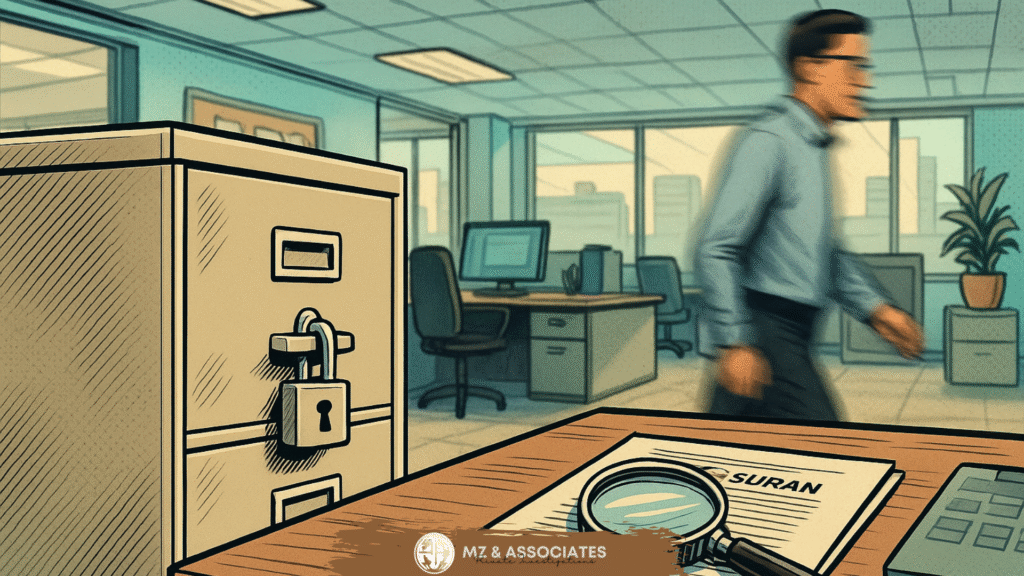
The Silent Threat: Why Insider Risk Tops Corporate Investigations in the U.S.
🚨 Insider Risk: The Threat Hiding in Plain Sight
From major data leaks to intellectual property theft and workplace sabotage, insider threats have surged across American businesses. And here’s the twist—many companies don’t see them coming until it’s too late.
According to a 2025 report by Ponemon Institute, insider threats have risen by 43% over the last two years, costing U.S. companies an average of $15.4 million per incident.
Why? Because insiders already have access to:
Sensitive systems
Financial records
Intellectual property
Internal communication networks
Whether malicious or accidental, the damage is real—and growing.
👥 Who Are Insider Threats?
Not every insider is a criminal mastermind. They typically fall into three categories:
The Malicious Insider:
An employee or contractor who deliberately steals, leaks, or sabotages data.
Example: A soon-to-be-terminated employee downloads customer databases before quitting.
The Negligent Insider:
Someone who exposes systems or data through carelessness.
Example: Clicking a phishing link or losing a company laptop with sensitive files.
The Compromised Insider:
An employee whose credentials are stolen or manipulated by outside attackers.
Example: Hackers access internal systems using a supervisor’s login.
🔍 Why Private Investigators Are Called In
While cybersecurity teams monitor networks, private investigators dig deeper into human behavior, motives, and patterns that software can’t detect.
Here’s how investigators like MZ & Associates help companies stop insider threats before they cause irreparable harm:
1. Behavioral Monitoring & Surveillance
🚩 Is someone acting unusually after a bad performance review or demotion?
A PI can track signs of:
Late-night file access
Meetings with competitors
Unusual travel patterns
Secretive communications
Case Example:
A tech firm in California hired a PI after noticing irregular email traffic from a senior developer. Surveillance revealed the employee was planning to sell source code to a competitor. Swift action prevented a major intellectual property breach.
2. Digital Forensics & Device Audits
Private investigators analyze:
Email trails 📧
USB device activity 🔌
File access logs 📁
Secure messaging apps 📱
They can identify who accessed what and when, even if an employee tried to cover their tracks.
3. Exit Investigations: Before They Walk Out the Door
Resignations and terminations are high-risk moments. A disgruntled employee might:
Download files
Sabotage systems
Leak sensitive information
A PI can:
Conduct a digital footprint review
Interview coworkers anonymously
Recommend countermeasures like access restrictions
💡 Smart companies now conduct exit screenings on all mid- to high-level departures.
4. Vendor & Contractor Risk
Not all threats come from internal staff. Vendors, freelancers, and short-term consultants often get access to systems—and they’re not always vetted properly.
PIs conduct:
Deep background checks
License verifications
Financial red flag reviews
Especially in industries like construction, healthcare, and fintech, one shady vendor can bring down your entire compliance system.
5. Internal Fraud Investigations
When money goes missing or expenses don’t add up, private investigators follow the paper trail. Common fraud includes:
Fake vendors
Inflated invoices
Ghost employees
Payroll fraud
By tracking down internal leaks, PIs help businesses recover losses—and prevent recurrence.
🧠 Why Most Insider Threats Go Undetected
Despite having advanced firewalls and IT policies, most companies miss red flags because:
HR isn’t trained in threat detection
IT teams focus on external cyberattacks
Employees hesitate to report suspicious behavior
Small businesses assume it won’t happen to them
Wrong. Insider threats don’t discriminate by company size or industry.
📊 Real Numbers, Real Impact
68% of insider attacks are not detected until after damage is done
44% of companies don’t have an insider threat program
85% of fraud cases involve someone within the organization (ACFE Report)
🔐 What Companies Can Do Right Now
Step 1: Acknowledge insider threats are real
Step 2: Partner with experts to monitor behavior, assess risk, and investigate anomalies
Step 3: Combine cybersecurity with human intelligence (PIs)
Step 4: Educate teams on reporting and recognizing red flags
Step 5: Conduct regular background checks—not just at hiring, but during tenure
✅ The Role of MZ & Associates
At MZ & Associates, we help companies in California and across the U.S.:
Uncover and stop internal fraud
Protect intellectual property
Identify risk before it becomes a lawsuit
Train leadership teams to recognize threat patterns
We combine surveillance, interviews, digital forensics, and corporate intelligence to get to the truth—quietly, quickly, and ethically.
🧾 Conclusion: The Enemy Within Isn’t Always Obvious
Today’s most dangerous threats aren’t breaking in—they’re already inside. Ignoring insider risks can cost you millions, your reputation, and your future.
Private investigators provide the clarity, discretion, and strategy you need to stay ahead of silent threats.
